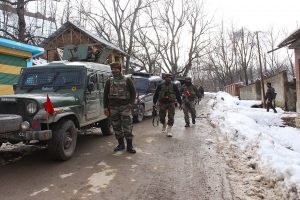South Korea appears to be in the early stage of a sixth resurgence of coronavirus infections, with related data indicating a bigger impact on the horizon. But the government has yet to come up with stronger measures to fight highly transmissible subvariants, casting a cloud over the already worsening outlook. The country reported 71,170 new COVID-19 infections Thursday, marking the third straight day of figures above 70,000, according to the Korea Disease Control and Prevention Agency. The weekly average also spiked to 52,560, up from 18,388 on Monday. Since President Yoon Suk-yeol took office in May, the new administration has been passive about handling COVID-19 policies. The main reason was that the number of new cases had been on a steady decline even after most social restrictions were lifted. But things began to change rapidly in recent weeks as the daily infection count continued to almost double from a week ago due to the spread of new subvariants of omicron, such as BA.5, which are far more contagious strains than previous ones.
In particular, omicron strain BA.5 is quickly spreading around the world and is said to skirt the immunity of existing vaccines. New BA.5 infections from overseas will continue to go up during the summer holiday season, the KDCA said. The health agency forecast that the daily infection count would surge to over 280,000 in August, up from its previous estimate of 200,000. Experts also warned that the government’s current policies are not strong enough to reverse the trend. On Tuesday, President Yoon said in a Cabinet meeting that his administration’s basic philosophy in preventing and treating COVID-19 cases comprises “science-based measures” designed by experts. But the Yoon administration’s “science-based measures” have been largely disappointing. First, the government keeps failing to predict the daily count accurately. Last week, it forecast the daily caseload would peak at 185,000 in end-September. Such a figure turned out to be too optimistic, given doubling daily counts. Second, the government introduced a new vaccine program Monday, whose preventive effect in terms of science is being questioned.
Advertisement
Under the program, the government is now recommending fourth vaccine shots for people aged 50 and older, as well as people aged 18 and older with underlying health problems. Previously, a fourth shot was recommended for those aged 60 and older. But existing vaccines do not have specific components yet to prevent the latest subvariants, including BA.5. Health authorities also said a fourth shot’s general preventive effect averages a mere 24.6 percent in the first month after vaccination and declines to 8.9 percent from the second month. No wonder, then, that people in their 50s are reluctant to opt for a fourth jab amid lingering concerns about vaccine side effects. Moreover, vaccine fatigue is a tricky issue. Unlike other vaccines, coronavirus shots tend to last just some four to six months. Taking additional shots whenever a virus resurgence occurs adds to the vaccine fatigue.











